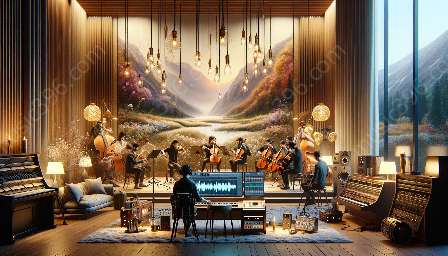Music and rituals are interconnected in numerous cultures across the world, playing a significant role in shaping social, cultural, and religious practices. These rituals often incorporate specific musical elements and expressions that serve a variety of purposes, from invoking spiritual experiences to strengthening community bonds. In this exploration, we will delve into the profound connection between music and rituals in different cultures, while also examining the socio-cultural aspects of music analysis within the context of rituals.
The Role of Music in Rituals
Music has always been an integral part of rituals and ceremonial practices in diverse cultures. It serves as a powerful medium for expressing and reinforcing the cultural identity, values, and beliefs of a community. In many cases, certain musical instruments, such as drums, flutes, or stringed instruments, are deemed sacred and are exclusively used in ritualistic performances. Furthermore, the melodies, rhythms, and lyrics of ritual music often carry deep symbolic meanings that are rooted in the cultural and religious narratives of a particular community.
Through music, rituals are elevated to a profound emotional and spiritual experience, creating a transformative space for participants to connect with their inner selves and with the divine. The repetitive and mesmerizing nature of ritualistic music induces a trance-like state, allowing individuals to transcend ordinary consciousness and enter a heightened spiritual realm. This aspect of music in rituals demonstrates its potential to induce altered states of consciousness and facilitate the communion between the human and the divine.
Musical Variations in Rituals
While the fundamental role of music in rituals is consistent across different cultures, there exist fascinating variations in musical styles, instruments, and practices employed in ritualistic contexts. For example, in some indigenous societies, the use of vocal chants and percussion instruments predominates, serving as a means to communicate with ancestors and nature spirits. In contrast, in certain religious ceremonies, intricate hymns and complex melodies take center stage, reflecting the doctrinal teachings and spiritual narratives of the faith tradition.
Moreover, the timing, structure, and improvisational elements of ritual music differ significantly among cultures. Some rituals feature highly structured and choreographed musical performances, while others embrace improvisation and spontaneous musical expressions. These variations showcase the diversity and richness of musical traditions in the context of rituals, highlighting the dynamic interplay between music and cultural practices.
Socio-Cultural Significance of Ritual Music
When analyzing the role of music in rituals, it is essential to consider the socio-cultural implications embedded within these musical expressions. The performance and reception of ritual music are deeply embedded in the social fabric of a community, serving as a means of reinforcing social cohesion and solidarity. Through collective participation in musical rituals, individuals strengthen their sense of belonging and shared identity, fostering a harmonious communal experience.
Furthermore, ritual music also reflects and perpetuates the gender roles, power dynamics, and social hierarchies prevalent within a society. Certain musical instruments or vocal styles may be reserved exclusively for specific genders or social classes, reflecting the intricate dynamics of social stratification and cultural norms. Additionally, the performance of ritual music often serves as a platform for preserving and transmitting oral traditions, myths, and historical narratives, functioning as a repository of cultural heritage and values.
Music Analysis in the Context of Rituals
Music analysis within the context of rituals involves a comprehensive examination of the musical structures, compositional techniques, and performance practices employed in ritualistic settings. Ethnomusicologists and musicologists utilize diverse analytical frameworks to decipher the intricate layers of meaning and symbolism inherent in ritual music.
One approach to music analysis in the context of rituals involves studying the sonic elements such as pitch, timbre, and rhythm to understand how these elements contribute to the emotional and spiritual resonance of the music. Moreover, scholars delve into the historical and cultural context of ritual music, tracing its evolution, intercultural influences, and adaptive transformations over time.
Additionally, by employing ethnographic methodologies, researchers gain valuable insights into the social functions of ritual music, investigating how it shapes social identity, enacts power dynamics, and embodies cultural values within a specific community. Through interdisciplinary collaborations with anthropologists, historians, and theologians, music analysis in the context of rituals becomes enriched with a multi-dimensional understanding of the intricate interplay between music, culture, and spirituality.
Conclusion
In conclusion, the relationship between music and rituals in various cultures is profound and multifaceted, shaping the socio-cultural landscape and spiritual experiences of diverse communities. The symbiotic connection between music and rituals extends beyond mere aesthetic expressions, encompassing intricate layers of cultural significance and communal bonding. Analyzing this relationship from a socio-cultural perspective allows for an in-depth comprehension of how music functions as a transformative force within the context of rituals, perpetuating tradition and engendering collective identities.

































